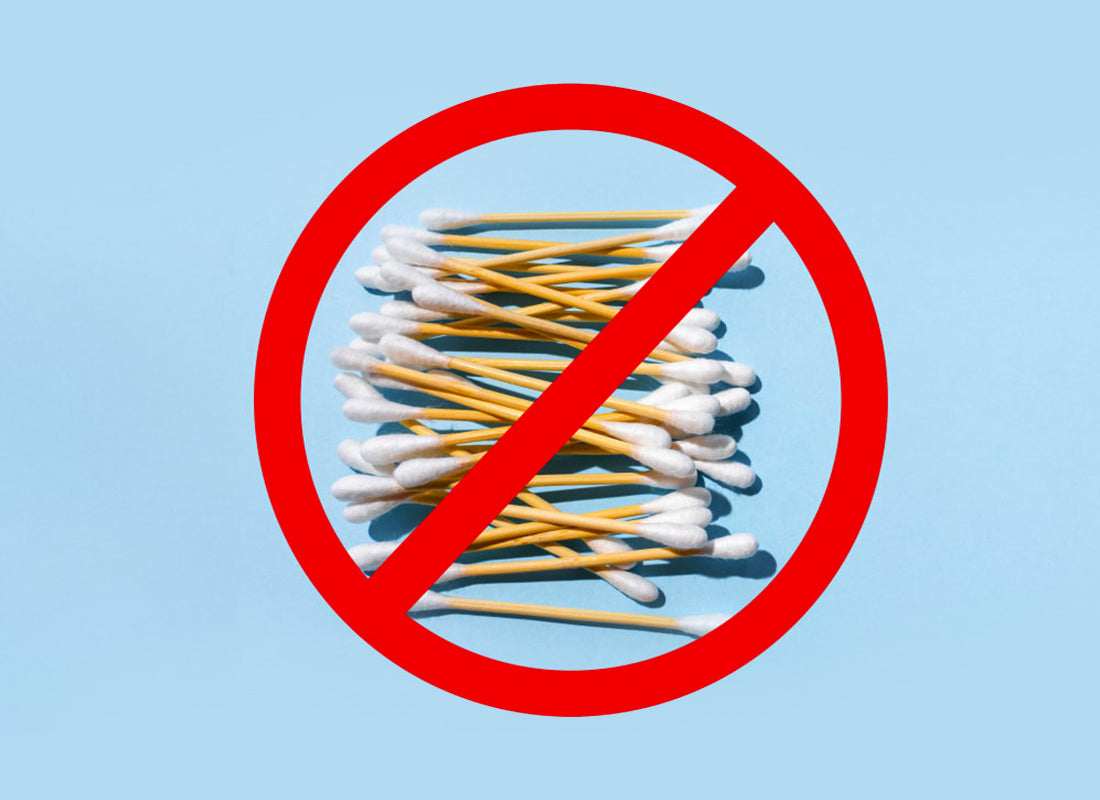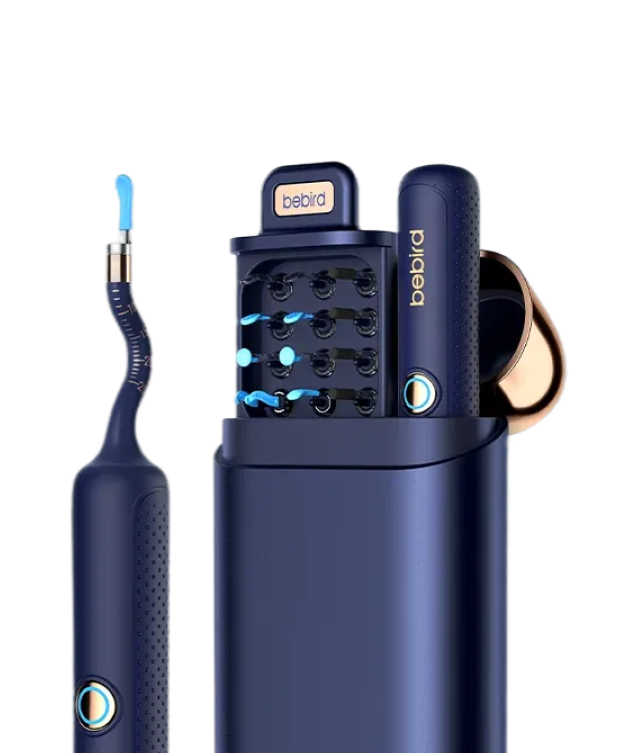Q-tips or cotton buds are the very first item we reach out for ear wax removal. Using these is convenient but they only remove a tiny amount of ear wax. Since these Q-tips are big for your ear canal, they might be pushing wax deeper into the ear, without you knowing. This can perforate the ear drum and cause hearing problems.
Then how to clean ears without Q-tips? You can try gravity-based techniques, warm water, oil, or ear wax cleaning kits for this purpose. Let’s see how each of these methods works.
Table of Contents
Part 1: Are Q-tips Bad for Your Ears?
It depends upon the area you are cleaning using the Q-tips. They are harmless for the outer area of your ears but can be dangerous for the inner ear. Nonetheless, people tend to reach for cotton swabs or Q-tips when they feel any discomfort in their ears.
This wrong practice can lead to ear infections, ear drum perforation, and a sensation of fullness. This is because Q-tips push the wax, dead cells, bacteria, and dirt farther inside the ear. As a result, the chances of infection increase. Moreover, we might also perforate our ear drum while trying to get all the wax out from the depth of our ear canal. A small part of a cotton swab or Q-tip might remain inside your ear thus causing a sensation of fullness and discomfort.
Part 2: How to Clean Ears Without Q-tips?
BeBird Note 5 Ear Camera
The BeBird Note 5 ear camera is a small, portable, handheld device that can help you inspect the ear structures and remove wax easily. It is a pen-shaped instrument with tweezers attached at its front. A small camera with lights is also built into the device to capture pictures and videos inside the ear.
You can connect it with your phone and see the video on camera. The strong arms of tweezers can help remove the wax easily. Since the whole process will be camera-assisted, therefore there are reduced chances of ear damage. In addition, you can save these photos and videos and send them to a doctor for professional advice.
Ear Wax Softening with Ear Drops
Ear wax buildup can also be removed with the help of wax-softening ear drops. The drops can dissolve the wax. These drops can either be water-based, oil-based, or non-water-based. In most cases, hydrogen peroxide or carbamide peroxide drops are prescribed for removing excess wax build-up.
These drops are first put in the ears, then after waiting for a few minutes you need to flush them out. You will see the wax coming along with these drops. Then, irrigate the ears with warm water to ensure that no drops or wax are left in the ear. You need to use them for at least 2 weeks to attain the maximum results.
Gravity-based Techniques for Natural Drainage
You can also take help from the gravitational pull of our earth to remove wax from your ears. For this purpose, you will only a fluid like water, oil, or ear drops first. Tilt your head to the side such that the affected ear is facing up. Pull the ear back and then put any of the water, fluid, or oil into the ears.
Wait for a few minutes and then tilt your head to the opposite side so that the ear with wax buildup is facing the ground. Keep a towel, tissue, or clean cloth under that ear. All the water, soften wax, and debris will drip out of the ears and soak in it.
Warm Water Rinsing
If you are against using drops for your ears, you can simply use warm water to clean your ears. The warm water can soften the ear wax without damaging the delicate structures of the ears. Before using warm water, make sure that the temperature of the water is neither too hot nor too cold.
Cold water will not have any effect on the wax while hot water can burn the ears. So before putting water directly into your ears, you can dip your finger in it and see if the temperature is bearable. You can also measure the temperature. The safe range is 96.9 to 104.9 Fahrenheit.
Use of Bulb Syringes or Irrigation Kits
Bulb syringes or irrigation kits can in the entry of optimal amount of any oil or water in the ear. You can control the exact amount using the syringes. The bulb syringes, in particular, are also cheap and reusable. Moreover, you can remove ear wax using these at home without needing a professional.
These are easily available at pharmacies or online stores. For a bulb syringe, just fill it with warm water, tilt your head, and squirt the water in. It dislodges the ear wax. Then, tilt your head in the opposite direction to let the water seep out of your ear. Irrigation kits also work similarly. Some have bulb syringes included while others provide you with small spray bottles.
Microsuction
Microsuction is mostly done by professionals to remove ear wax with the help of a cannula (a small tube for suction). This technique can help remove even the most stubborn particles blocking your ear canal. It takes only a few minutes.
Howmicrosuction is done? The doctor examines the ear first using a microscope and then a tiny long tube is inserted into the ear. It dislodges all the foreign particles. After that, either vacuum or tiny forceps are used to remove the foreign bodies or wax from the ear.
Natural Remedies
How do natural remedies help in ear cleaning? Let’s see:
- Baking Soda: It can help soften the ear wax just like warm water. To prepare the mixture, mix half a teaspoon of baking soda with 2 ounces of water. Then fill the mixture in a dropper and put 5 drops into your ear. Leave it for an hour and then flush it out with water. Doing this for weeks will be enough.
- Oil: Any baby oil, mineral oil, coconut oil, olive oil, or even glycerin can be used instead of warm water to squirt into the ear. Put 5 drops of warm oil in the ear at bedtime and do not move your head for at least five minutes. Doing this for 3 to 4 days is sufficient for ear wax removal.
Conclusion
What are Q-tips for if not ears? They can help you touch up your eye makeup or clean the extra nail paint around your nails. They can also be used in cleaning the keyboards or making arts and crafts. You can use them for many purposes but not for ear wax cleaning.
These tiny cotton swabs can push wax deeper, perforate the ear drum, and cause infection. For safe ear wax removal, you can irrigate your ears with warm water, or oil using an ear bulb. Even hydrogen peroxide can help. Additionally, ear wax cleaning kits with in-built cameras like Bebird Note 5 Pro can prove as the safest option in examining ear health and removing ear wax.
















Leave a comment
All comments are moderated before being published.
This site is protected by hCaptcha and the hCaptcha Privacy Policy and Terms of Service apply.